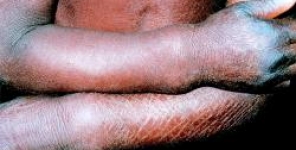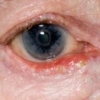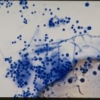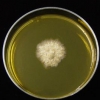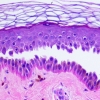Infezione refrattaria da Trichophyton rubrum nell'ittiosi lamellare
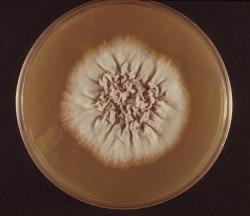 Un bambino di 10 mesi con ittiosi lamellare congenita si è presentato con un'infezione cronica da Trichophyton rubrum. Non c'era alcuna storia di atopia o di immunosoppressione, e l'esame ha rivelato un alto livello di immunoglobuline E totali (IgE) con delle specifiche IgE positive per T. rubrum; per controllare l'infezione sono stati necessari molti trattamenti con fluconazolo. Il T. rubrum è presente in tutto il mondo ed è responsabile della maggior parte delle dermatofitosi croniche. L'ittiosi lamellare è un fattore di rischio per la dermatofitosi cronica a causa dell'eccessiva deposizione di cheratina e del difetto di barriera. Una reazione di ipersensibilità di tipo ritardato verso T. rubrum è associata con la guarigione, mentre l'ipersensibilità immediata e le IgE non sono protettive e possono portare alle infezioni croniche. Inoltre, se ormai è ben documentata l'associazione tra ittiosi e atopia, sembra anche che l'atopia e il profilo Th2 possano essere associati con la dermatofitosi cronica. T. rubrum ha un'interessante capacità di elusione dell'immunità che aiuta a spiegare l'infezione cronica.
Un bambino di 10 mesi con ittiosi lamellare congenita si è presentato con un'infezione cronica da Trichophyton rubrum. Non c'era alcuna storia di atopia o di immunosoppressione, e l'esame ha rivelato un alto livello di immunoglobuline E totali (IgE) con delle specifiche IgE positive per T. rubrum; per controllare l'infezione sono stati necessari molti trattamenti con fluconazolo. Il T. rubrum è presente in tutto il mondo ed è responsabile della maggior parte delle dermatofitosi croniche. L'ittiosi lamellare è un fattore di rischio per la dermatofitosi cronica a causa dell'eccessiva deposizione di cheratina e del difetto di barriera. Una reazione di ipersensibilità di tipo ritardato verso T. rubrum è associata con la guarigione, mentre l'ipersensibilità immediata e le IgE non sono protettive e possono portare alle infezioni croniche. Inoltre, se ormai è ben documentata l'associazione tra ittiosi e atopia, sembra anche che l'atopia e il profilo Th2 possano essere associati con la dermatofitosi cronica. T. rubrum ha un'interessante capacità di elusione dell'immunità che aiuta a spiegare l'infezione cronica.
Infine, nell'ittiosi, è probabile che il fluconazolo abbia difficoltà a penetrare lo strato corneo acantosico: un fenomeno che potrebbe spiegare il fallimento del trattamento. Riportiamo questo caso per avvisare i medici della possibile associazione tra l'ittiosi lamellare e la dermatofitosi cronica e, per segnalarne le difficoltà di gestione.
Storia della pubblicazione:
Titolo: Refractory Trichophyton rubrum Infection in Lamellar Ichthyosis
Rivista: Pediatric Dermatology. doi: 10.1111/pde.12160
Autori: Christel Scheers, Josette Andre, Curtis Thompson, Elisabeth Rebuffat, Saadia Harag, Athanassios Kolivras
Affiliazioni:Department of Dermatology, CHU St Pierre, Université Libre de Bruxelles, Brussels, Belgium Department of Dermatology and Pathology, Oregon Health Sciences University, Portland, Oregon Department of Pediatrics, CHU St Pierre, Université Libre de Bruxelles, Brussels, Belgium
Abstract:
A 10-month-old boy with congenital lamellar ichthyosis presented with a chronic Trichophyton rubrum infection. There was no history of atopy or immunosuppression, and examination revealed high total immunoglobulin E (IgE) with a positive specific IgE for T. rubrum. Multiple treatments with fluconazole were necessary to control the infection. T. rubrum is present worldwide and is responsible for the vast majority of chronic dermatophytosis. Lamellar ichthyosis is a risk factor for chronic dermatophytosis because of excessive keratin and the barrier defect. A delayed-type hypersensitivity reaction to T. rubrum is associated with cure, whereas immediate hypersensitivity and IgE are not protective and may lead to chronic infection. Atopy and the Th2 profile therefore seem to be associated with chronic dermatophytosis. The association between ichthyosis and atopy is well documented. T. rubrum also has an interesting ability to evade immunity, which helps explain the chronic infection. Finally, in ichthyosis, it is likely that fluconazole has difficulty penetrating the acanthotic stratum corneum, which explains treatment failure. We report this case to alert clinicians to the possible association between lamellar ichthyosis and chronic dermatophytosis and to report the difficulties of management.
